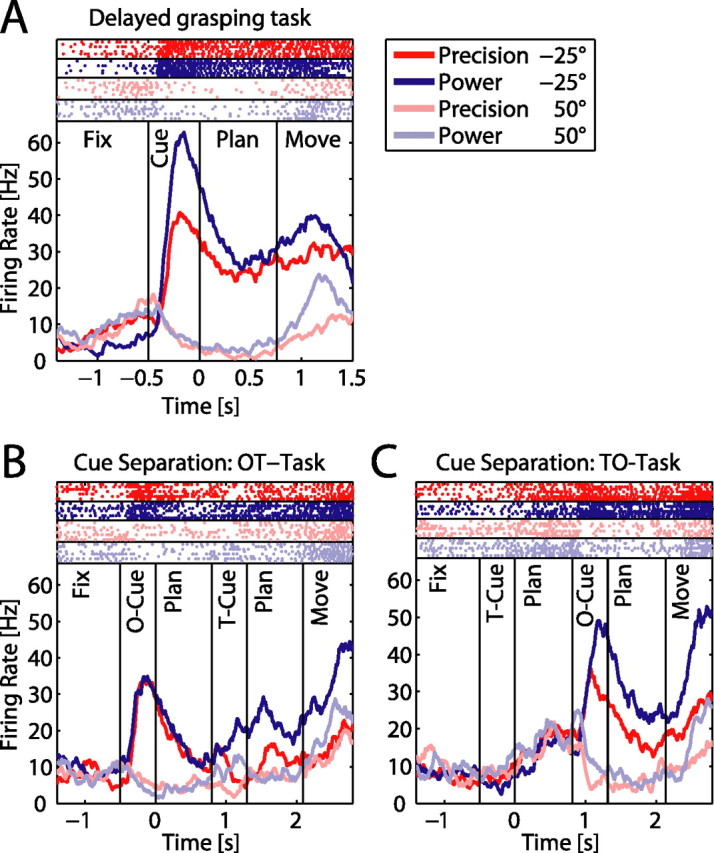Figure 5.

Neural activity in the cue separation task. Panels show one example neuron during the delayed grasping task (A) and the cue separation task: OT task (B), TO task (C). Different grip types are shown in red (precision) and blue (power), while the two grip orientations are shown in light and dark color. A, The neuron was early tuned for both parameters, showing highest activity for power grips at −25° orientation. B, In the OT task, presentation of the object in the −25° orientation evoked a strong response, which was then differentially modulated for the two grip types after the second cue. C, In the TO task, the cell did not respond to the type cue when presented in the absence of the object. However, the cell responded vigorously after the orientation cue with a preference for power grips in the preferred orientation.
